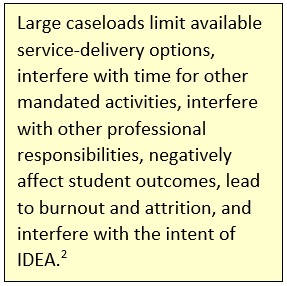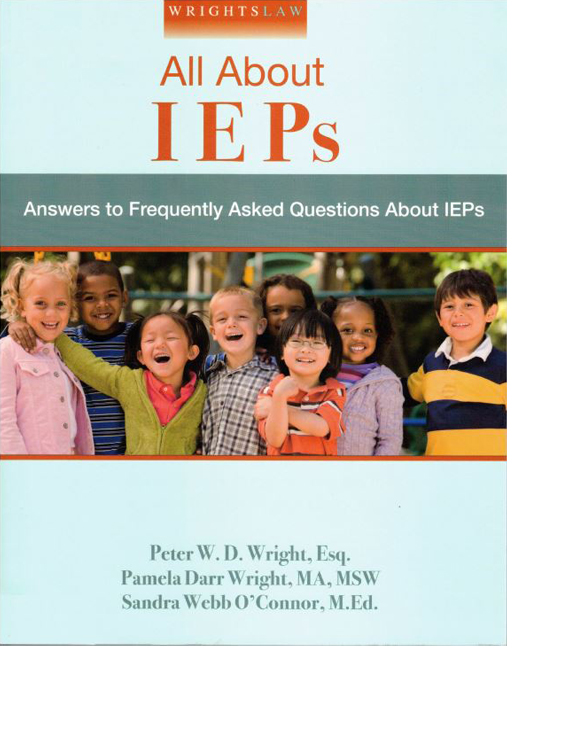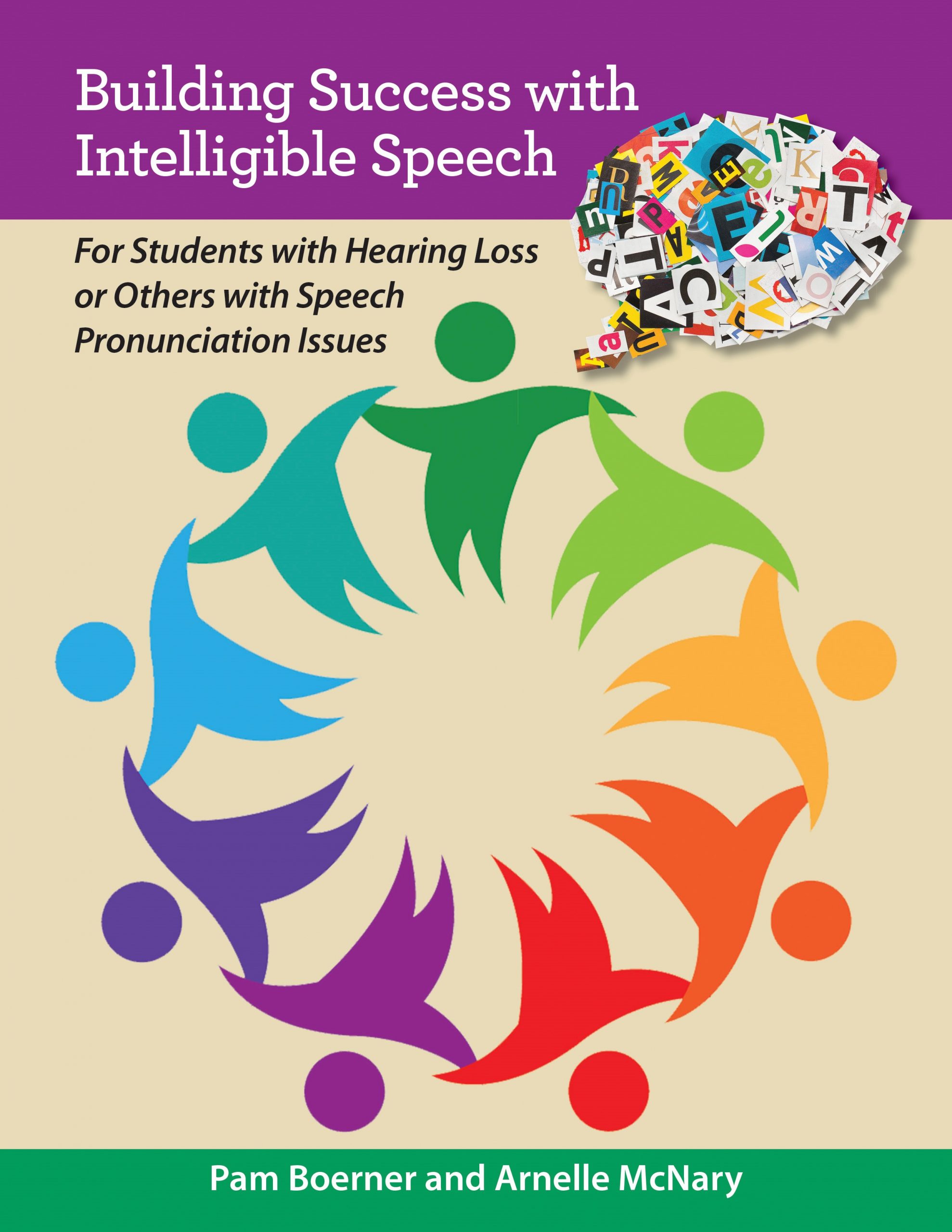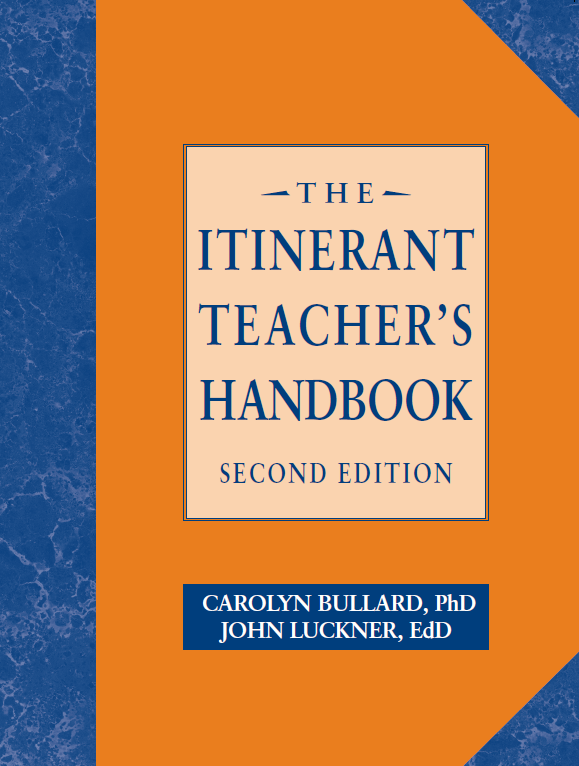Related Products
For Professionals
- Amplification
- Assessment of Student Skills, Challenges, Needs
- Early Childhood: Infants, Toddlers, Preschool
- Hearing Loss – Identification, Impact and Next Steps
- IDEA Law Summary Information
- Language and Speech Development Issues
- Legal Issues in Serving Children with Hearing Loss
- Listening (Auditory Skills) Development
- Planning to Meet Student Needs
- Self-Advocacy Skills for Students with Hearing Loss
- Self-Concept: How the Child with Hearing Loss Sees Himself
- Social Skills
- Speech Perception & Learning
Related Teacher Tools Takeout Items
Too Many Students to Serve?
 Caseloads: According to the 2017 survey conducted by Supporting Success1, the majority of itinerant teachers of the deaf/hard of hearing (ITDHH) have caseloads of 10-25 students in 10 different buildings, with 85% of students being served 1:1 or in small groups, and about 30% of caseloads being students who are ‘deaf-plus’.
Caseloads: According to the 2017 survey conducted by Supporting Success1, the majority of itinerant teachers of the deaf/hard of hearing (ITDHH) have caseloads of 10-25 students in 10 different buildings, with 85% of students being served 1:1 or in small groups, and about 30% of caseloads being students who are ‘deaf-plus’.
Increasing challenges: Fewer new educators of the deaf are graduating from university programs and a large number of teachers who have been in the field 20+ years will be retiring soon. Teachers with new certification in the DHH field who have received very limited training are being made responsible to provide the varied nuances of services needed by students with hearing loss and are often unprepared to identify what student needs truly are, much less how to address these needs. Thus, providing appropriate levels of service and support to our students and their mainstream teachers is increasingly challenging.
 Consultation requires real time! All too often consultation time is considered ‘flexible time’ that teachers can use when there are schedule changes, new students, or unforeseen issues arise. Consultation for the ITDHH often involves monitoring amplification devices, contacting the student’s audiologist, extensive inservicing of the classroom teacher, connecting with other service providers, and keeping parents informed of issues and progress. This all takes significant time and organization to accomplish for a caseload of students. While consultation may require minimal effort for some types of students qualified for special education, it requires more substantial time and continued follow up for students who are deaf or hard of hearing.
Consultation requires real time! All too often consultation time is considered ‘flexible time’ that teachers can use when there are schedule changes, new students, or unforeseen issues arise. Consultation for the ITDHH often involves monitoring amplification devices, contacting the student’s audiologist, extensive inservicing of the classroom teacher, connecting with other service providers, and keeping parents informed of issues and progress. This all takes significant time and organization to accomplish for a caseload of students. While consultation may require minimal effort for some types of students qualified for special education, it requires more substantial time and continued follow up for students who are deaf or hard of hearing.
Service decision-making: When asked about service provision decision-making, while 25% used a service matrix3, over half of the 2017 survey respondents indicated that when a new student is identified the amount of service time is dictated by the time available on the teacher’s schedule, even if there is a clear need for more direct ITDHH time. Students are most commonly served 60 minutes per week. It is not possible to close an academic gap of 6 months delay, and support an equal pace of learning, in just two 30-minute sessions per week, plus address self-advocacy and other expanded curriculum needs. Many, many of our students have greater language and academic gaps than 6 months and continue to receive less service than truly needed to rectify educational needs secondary to communication access issues. IEPs should reflect not only direct services, but also indirect services such as integrating IEP goals into the class curriculum and time needed to deal with hearing technology challenges.
Caseload caps – no-go: Use of caseload caps has often backfired in practice as some school administrators interpret the maximum caseload cap as a minimum. Caps also oversimplify the workload situation as the numbers do not allow for differences in workloads due to variations in itinerant travel and intensity of student needs.
What is an approach to providing services that can allow a realistic role for the itinerant teacher?
A model that has been receiving increasing recognition since 2014 among speech language pathologists, occupational therapists, and physical therapists, is called the 3:1 Workload Model. Per a recent ASHA article4, some of the benefits of the 3:1 Model include: improved quality of services, fewer vacancies, reduced litigation, increased opportunities for collaboration, greater ability to identify students needing services, significant reductions in professionals taking work home, better morale, increased ability to integrate IEP goals with classroom curriculum.
The 3:1 Workload Model, sometimes called the Flexible Service Delivery Model, is an evidence-based service delivery model that supports students in the least restrictive environment and encompasses direct services (teaching, assessment), indirect services (planning, teaming, meetings, teacher consultation, class observation, hearing device management, etc.), and district compliance services (IEP writing, assessment report writing, conferences, data logging, caseload management, team meetings, etc.). It may be most beneficial to call it the Flexible Service Delivery Model as those who do not fully understand the purpose of 1 week for indirect services may interpret this as an ‘easy week’ or ‘vacation week’ rather than a much-needed focus on collaboration and student supports.
In a typical school month, students receive 3 weeks of direct services and 1 week of indirect services. This allows for integration of targeted skills within core curriculum and increased collaboration between staff, parents, and IEP team members. The services provided during the 4th week of the month would include: consultation/meetings, observations, developing treatment materials, providing make-up sessions, more intensive services, assessments, IEP writing, progress documentation, team meetings, staff training, consultation with audiologists/CI centers, more intensive amplification checks, etc.
Documenting the 3:1 Workload Model on the IEP: “Therapy will be provided using a 3:1 service delivery model.” For example, the direct services would be written as: Student will receive 29 sessions per year (old model it would be written as 1x/week). Or student will receive 58 sessions per year (old model = 2x/week). Alternately, “Direct services will be provided by the itinerant DHHT X minutes per week, three out of four weeks per month. Direct services will focus on…” If you are interested in implementing this workload model5, you would write it into IEPs as they come up throughout the school year, changing the service minutes to reflect the 3:1 model that would begin the next school year. Students with the most intensive needs may not be appropriate for this model. Information on implementation of this model stresses the importance of ‘PR’ so that classroom teachers and families recognize the benefits of not only teaching students, but also supporting their ultimate classroom success.
References:
- 1. Online survey, April 5-May 8, 2017: Roles of the Itinerant DHH Teacher. Download summary.
- 2. ASHA position statement on caseloads: https://www.asha.org/policy/ps2002-00122/
- 3. For information on service matrices, go to: https://successforkidswithhearingloss.com/for-professionals/issues-determining-service-delivery/
- 4. May 2019 ASHA Leader, The 3:1 Model – A Workload Solution, page 36-37.
- 5. https://thespeechroomnews.com/2015/07/31-flexible-service-delivery-model.html



